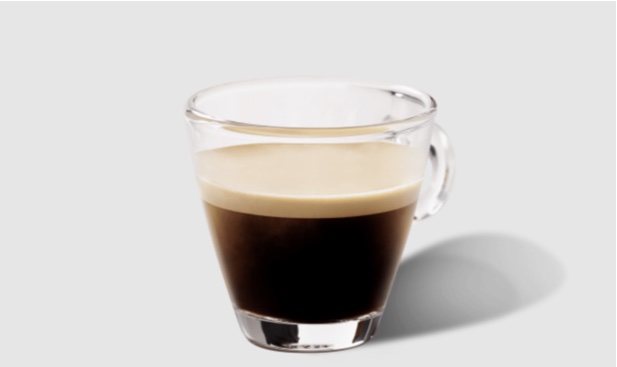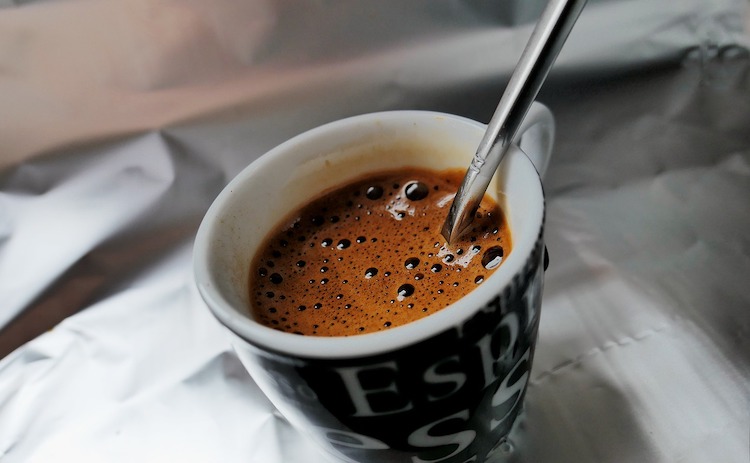Blonde espresso is a drink that’s all the rage in boutique coffee shops. While it sounds like something you’d find on your hair, it’s actually a very different type of espresso than the one you know and loves (regular espresso). I’m here to help with that! In this article, we’ll compare blonde and regular espresso so that you can decide which one is right for you.
We’re here to help you decide between blonde espresso and regular espresso. We’ll be taking a look at the differences, similarities, and similarities between two types of coffee.
So what is the difference between blonde espresso and regular espresso? The main difference between blondes and regulars is the amount of time that it takes for them to reach full roast. When you have a blonde espresso, it means that your coffee was roasted for a shorter period of time than regular espresso beans.
Table of Contents
What is blonde espresso?

When you order a blonde espresso, you’re requesting a drink that has been made using part of the coffee bean with its outer shell intact. This means your coffee will be lighter in color and milder in flavor than if it were made with an unblended bean.
If your heart is set on ordering regular espresso, don’t despair! In this case, a barista will grind up the beans into fine powder and add them to hot water to brew your beverage.
This is the most common form of espresso. It’s often served as a shot, but you can also order it as a latte or other drink. The reason why this type of espresso is so popular is because it’s easy to make and has a bold flavor that isn’t too overpowering.
What is regular espresso?
Regular espresso is made from 100% Arabica beans and has a darker color and stronger flavor than blonde espresso.

Espresso originated in Italy, where it was produced using hand-operated lever machines (much like the ones we use today). These machines were designed to force hot water through finely ground coffee at high pressure—creating a concentrated brew that could be mixed with milk and called “espresso”.
Espresso is usually served in a small cup and has a very strong flavor. Because it’s so concentrated, it takes much less time to make than regular coffee—which means that it’s an ideal drink for busy people on the go!
Differences in Taste
What are the differences between blonde and regular espresso?
If you’re a coffee lover, you may have noticed that there are two types of espresso available at your local coffee shop: one with a lighter color and a smoother taste, and one with a darker color and more bitter flavor. Which is better? It depends on what kind of drinker you are. Here’s how they compare:
- The blonde espresso has less acidity than the regular. This means it’s smoother and less bitter on your palate—more like a latte than an espresso shot! If you prefer sweeter drinks with milder flavors, this might be for you.
- On the other hand, if you like your drinks to be bolder and more intense in flavor (like I do), then go for the regular brews instead! These will have higher levels of caffeine as well as more bitterness in each sip—but they’re also much more satisfying when paired with milk or cream (which helps cut through some of those strong notes).
If you’re looking for a more mild, smooth-drinking espresso, then go with the blonde variety. If you want something bolder and more intense in flavor, try out regular brews instead!
Flavor Profile of Blonde Espresso
Blonde espresso is a little sweeter than regular espresso, with notes of nuttiness and cacao. It has a smoother finish than regular espresso, which means it doesn’t have the same bitter taste or acidic aftertaste that some people find unpleasant.
Blonde espresso is slightly less sweet than regular because it’s made from more finely ground coffee beans.
The coffee bean is the seed of a drupe, which is a fleshy fruit containing one or more seeds. The coffee bean itself is part of the pit inside the cherry of the coffee fruit.
Flavor Profile of Regular Espresso
Regular Espresso is a pretty straightforward cup of coffee. It has a rich, bitter flavor that’s often described as chocolatey or nutty. You’ll notice that regular espresso has more of an acidic taste than blonde espresso. This means its flavor is slightly sharp, especially if you brew it with less water (which is the norm).
In terms of appearance, both blondes and regulars are brown in color; however, the color will be darker and richer on the regular side.
Espresso is a type of coffee that’s served in a shot. This means that it’s made with finely ground, dark roasted beans and water pressure extracted through an espresso machine. The process involves forcing hot water through finely ground coffee powder in order to create a thick, concentrated liquid.
Preparation Methods
There are two main preparation methods for blonde espresso:
- The first is the cold brew method, where blonde espresso is made with a lighter roast and then prepared with hot water. This will give you a rich flavor, but it’s important to note that the process of cold brewing doesn’t include any heat, so your coffee won’t necessarily have as much aroma or flavor.
- The second way is by using a stovetop brewer and steaming the grounds at lower temperatures. This produces more foam compared to regular espresso shots due to its higher water content (because less pressure has been used). The end result will be slightly sweeter than regular espresso shots because of its lower acidity levels (if your tastes lean towards sweet things).
How to make blonde espresso?
Here are the steps to making blonde espresso:
- Use a filter or cloth to filter the coffee grounds from your brew, then pour it into a coffee maker.
- Brew and serve! You can use any type of milk frother to froth your milk for this beverage, but if you want something simple yet effective, try whipping it by hand with a whisk or fork (it takes about 10 seconds).
- Pour all of that goodness into a cup—and voila! Your homemade blonde espresso is ready for drinking or serving at parties or gatherings in place of regular black-and-white lattes and cappuccinos.
How to make regular espresso?
Making regular espresso at home is easier than you might think. It starts with a high-quality coffee bean and a good grinder, but the steps are simple enough that even beginners can make it work.
First, choose your beans! If you’re going to use whole beans instead of pre-ground coffee, make sure they’re fresh by smelling them before using them in your brew—if they don’t smell like coffee or if they smell musty or stale, then it’s time for new ones! Next, grind your beans according to the type of machine you’ll be using (if applicable). For example: if you have an automatic machine that grinds coffee for you as soon as it’s inserted into the machine and ground through an auger mechanism (like many Nespresso machines), then adjust accordingly so that all beans are ground evenly without clumping together too much during grinding (depending on how coarsely or fine-grained your device allows).
If you’re using a manual machine, then grind your beans just before brewing. You’ll want to have them finely ground but not powdery—if they’re too fine, it can cause clumping during brewing or let too much water through.
See also:

Hi, I’m Jen from New Mexico. I have been working from home as a graphic designer for a long time. While working at home, I realized that I enjoy spending time in the kitchen. The kitchen is my biggest hobby. I set up this site to relay the products and experiences I’ve tried. I review many kitchen equipment and share them with you!
